Best banjos 2025: Whether you’re into bluegrass, folk, alt, or rock, there's a banjo for you
Elevate your performances with a level of snap and twang that only a banjo can deliver. Our pick of the best from Fender, Epiphone, and more
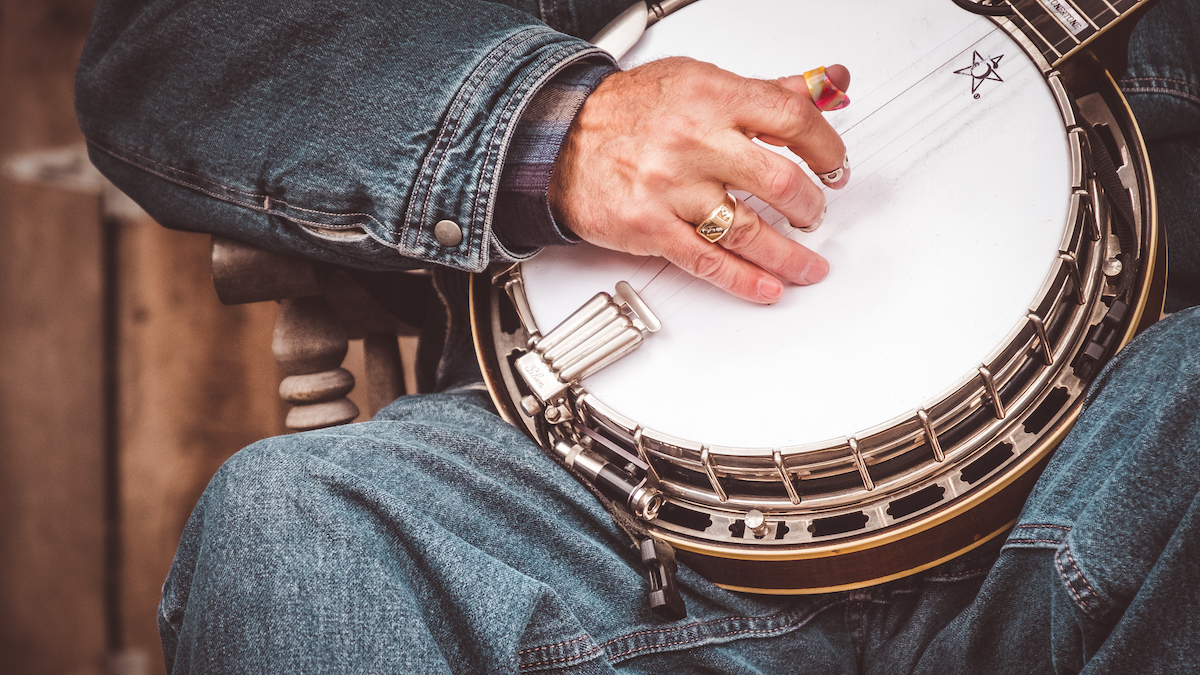
Did you hear the one about the banjo player who got all the gigs? Well, it’s no joke, the banjo is back, and it couldn’t be more popular. A mainstay of trad jazz, bluegrass and folk, the banjo’s distinctive sound is now just as likely to be heard in pop, rock, country and alternative genres. Everyone from Led Zeppelin to Keith Urban, including jazz-infused electronica duo Air, have included choice banjo licks in their compositions.
So, if you still think of the banjo as a joke instrument, wielded only by dentally challenged hillbillies, think again because it’s making serious inroads into mainstream songs, film scores and gaming sound design. If you’ve been thinking about one to your arsenal, we’ve covered everything you need to find the best banjo for you.
There are a variety of banjo types to choose from, but don’t worry, we’ll guide you through the lot. And, if you’re a guitar player who fancies a slice of that authentic banjo tone but without the hard work of learning a new instrument, then you’re in luck. Banjos with a guitar neck and guitar tuning have become increasingly popular for a couple of decades now.
We’ve included some expert buying advice at the end of this guide, so if you’d like to read more about the best banjos then click the link. If you’d rather get straight to the products then keep scrolling.
Best banjos: Our top picks
The Recording King Elite Flying Eagle is a dream contemporary banjo, inspired by an icon of the past - the legendary Gibson Mastertone. It’s a powerfully voiced, handcrafted 5-string banjo made from quality maple and mahogany tone woods that, together with its oversized tone ring, produces an archetypal banjo tone that features truckloads of snap, volume and sustain. It’s not cheap, but it is a pro-level instrument that you’ll treasure.
Fender’s Paramount PB-180E is aimed squarely at the budget conscious player. Hand over a modest amount of cash and you’ll be rewarded with a well-appointed banjo that sounds fantastic whether you’re playing alone in the back room or with your bluegrass group in the ballroom. Decent tone woods, a genuine Remo head and a powerful Fishman pickup won’t leave you or your audience wanting.
Best Banjos: Product guide
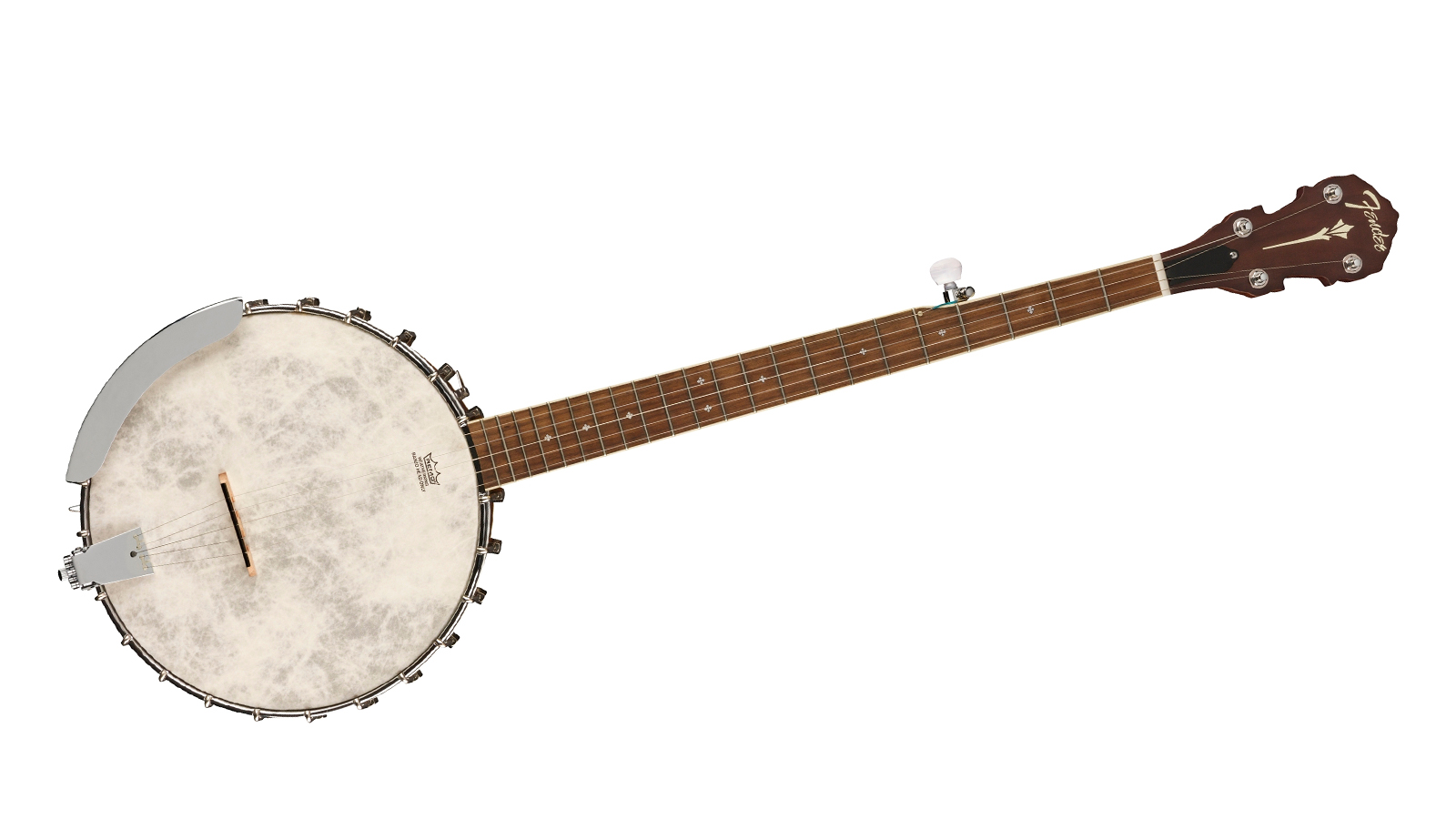
1. Fender Paramount PB-180E
Our expert review:
Specifications
Reasons to buy
Reasons to avoid
Fender’s PB-180E banjo makes up an important part of its Paramount line, a range of fretted instruments that look like something your blues loving great-grandfather would have played but are, in fact, chock-a-block with modern appointments. Banjo prices have soared since his day, but Fender’s range is surprisingly affordable.
True to form, the PB-180E is a wallet-friendly open-back 5-string banjo that offers superb value when you consider it features a Remo head, bone nut and Fishman pickup. It looks fantastic. Fender’s design team has resisted the temptation to disfigure it with a Strat or Tele style headstock, instead opting for a suitably retro, slender outline, decorated with an elegant tulip inlay. The nickel-plated hardware, snowflake inlays and ebony-tipped bridge set it off a treat.
The rim and neck are both mahogany, for a delightfully focussed sound, and the fingerboard is a beautiful slice of walnut. This is a fantastic banjo for folk, bluegrass or pretty much any other genre provided you’re happy with the slightly softer open-back sound. Of course, the Fishman pickup is going to give you plenty of reinforcement on stage, this banjo’s spiritual home. It’s an instrument built for performance.

2. Washburn Americana B16
Our expert review:
Specifications
Reasons to buy
Reasons to avoid
If there’s one thing that marks Washburn banjos out from the herd it’s heritage. They’ve been building banjos, in one form or another, since the late 1800s, so they know a thing or two about what makes a good ’un. This one, the Americana B16 is very good indeed, it’s one of the brand’s top banjos.
The B16 is a 5-string maple resonator, which means it exhibits a very loud tone that has a wealth of snap, articulation and clarity. Yes, it’s a fine banjo for solo work, but it excels at cutting through other instruments in a bluegrass band or folk ensemble.
The maple that Washburn has chosen is beautifully flamed, and it also features a bell brass tone ring, gorgeous inlays on the neck and headstock, planetary tuners, a Remo head, slick ebony ’board and quality chromed hardware. This is a top-end banjo, that’s worthy of the Washburn name inlayed on its fine headstock.

3. Epiphone MB-100 First Pick 5-string banjo
Our expert review:
Specifications
Reasons to buy
Reasons to avoid
Did you know that banjo production was once so critical to Epiphone that during the late 1920’s it changed its name to ‘The Epiphone Banjo Company’? Of course, the Jazz Age is long past, but Epiphone still produces a banjo, the entry-level MB-100.
Common to all Epiphone instruments, the term ‘entry-level’ mustn’t be misconstrued as ‘substandard’. The MB-100 boasts some pretty impressive specs, including a Remo head, mahogany rim, mahogany neck, rosewood fingerboard, ebony tipped maple bridge, nickel-plated hardware and decent closed gear tuners. It’s a neatly built, good-looking banjo that will suit either a beginner or someone who’s already competent on the guitar, mandolin or fiddle and fancies dipping a toe into a pool of new tones.
Unless miked up, the open back and lack of pickup will make it hard to hear over the guitar and mandolin in a bluegrass band. Nevertheless, this is a wonderful instrument for learning and playing solo pieces.
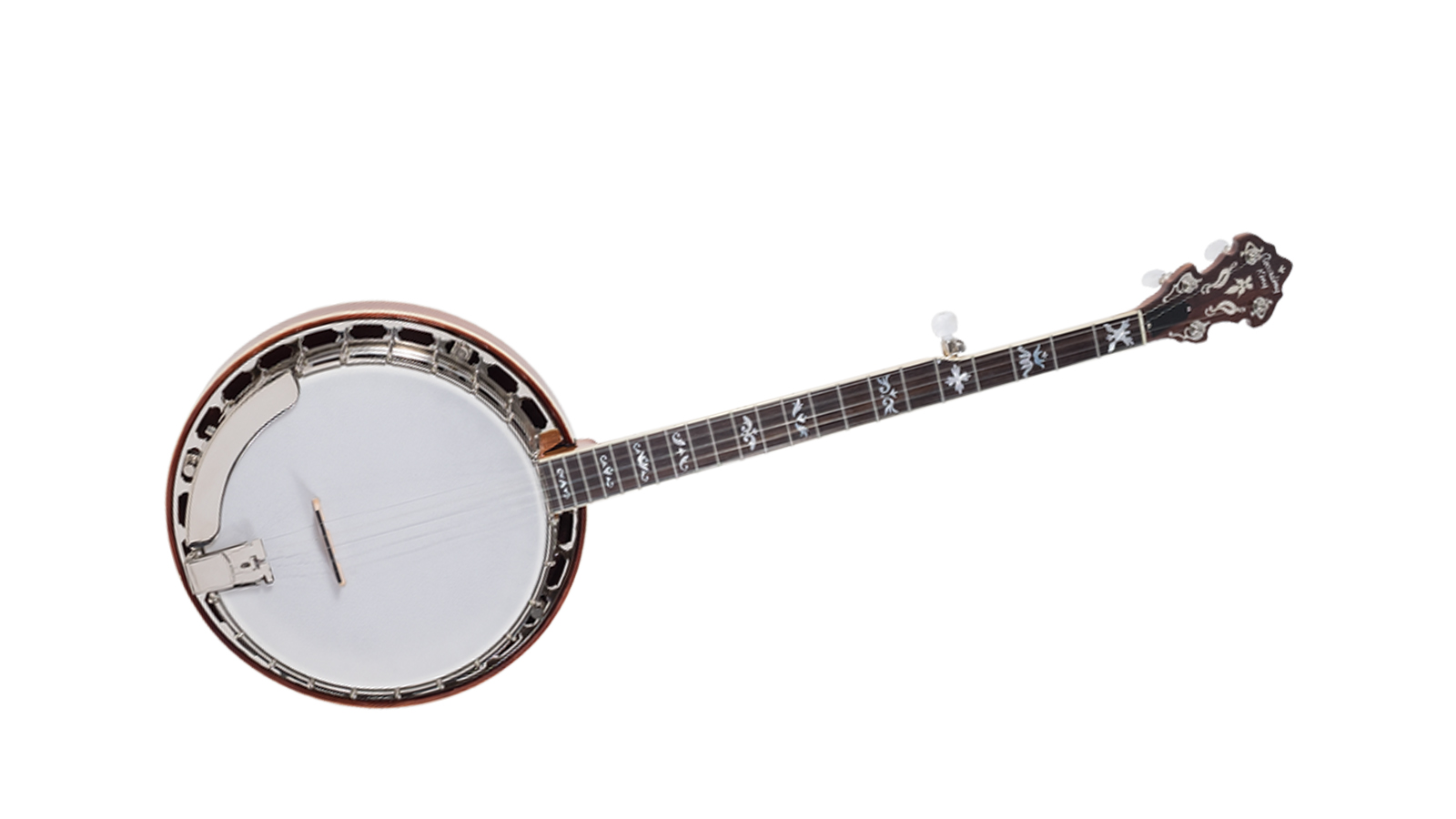
4. Recording King Elite Flying Eagle
Our expert review:
Specifications
Reasons to buy
Reasons to avoid
The Elite Flying Eagle is a high-end banjo that’s closely modelled on an icon, the Gibson Mastertone series of the mid-1920s through the 1930s. Before the Mastertone, Gibson’s attempt at making a banjo that could compete with those from Epiphone, Paramount and Vega was pitifully poor. Frankly, it was so awful that it risked damaging the reputation of the Gibson brand. Not happy, legend has it that Gibson’s top brass commissioned gifted luthier Lloyd Loar to build a banjo that would silence the competition forever. The result was the Mastertone, with its distinctive, innovative large hollow metal tone ring and incredible tone.
The Elite Flying Eagle is Recording King’s handcrafted homage to the Mastertone. It features a Mastertone-style tone ring, a steam-bent 3-ply maple rim, fast ebony fretboard and Gotoh planetary tuners. Visually, the vintage-style double-cut peghead, bound ebony fretboard and exquisite custom Flying Eagle-style inlays along the neck make this banjo a real scene stealer. Sonically, the mix of maple and mahogany infuse it with a well-balanced tone that’s got plenty of snap and punch. There’s loads of power on tap, and the sound is magical.
This banjo is a sound investment for players who take build-quality, materials and tone seriously.

5. Recording King Dirty 30s Tenor
Our expert review:
Specifications
Reasons to buy
Reasons to avoid
At this price, it’s very tempting to add a different sonic flavour to your quiver of banjos isn’t it? Especially, if two of you in the band can spar against one another. We wouldn’t necessarily recommend the Dirty 30s Tenor to a beginner, despite the price. Yet, as a second instrument it makes a wonderful choice that offers so many creative opportunities.
Four-string short-scale Tenor banjos like the Dirty 30s became popular in the early part of the 20th Century to add rhythmic texture and drive to jazz and ragtime, but they’re just as at home in the folk, Celtic and Dixieland genres. As with most Tenor banjos, the out of the box tuning is CGDA, making it an easy instrument for violinists and cellists to pick out a tune on.
To be honest, the spec is nothing to get excited about but, being a Recording King, the Dirty 30s Tenor is well built, and it does have a bona fide Remo head. So, if you want to thicken out your sound with a second banjo without risking too much cash, this makes an excellent choice.
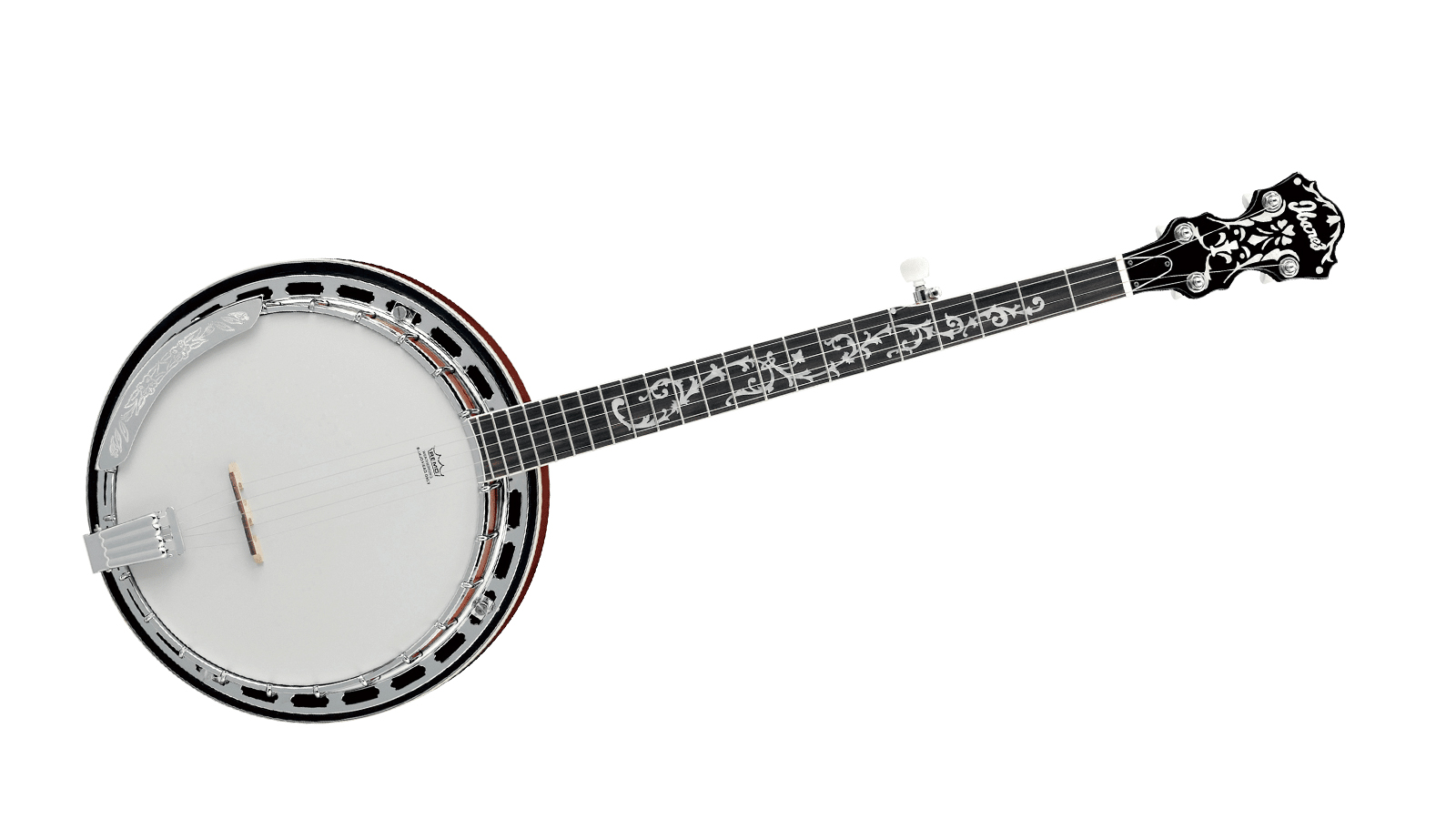
6. Ibanez B200 5-string resonator
Our expert review:
Specifications
Reasons to buy
Reasons to avoid
Sure, Ibanez lacks the heritage of some of the other brands in this guide. However, it’s actually been producing banjos for decades, back to the time when, to compete, Japanese instruments had to be better quality than the American originals they were, ahem, ‘based on’. The B200 is no different, a well put together banjo that plays and sounds way better than its mid-level price point suggests.
The feature that truly elevates it above its entry-level competitors is its solid back - yep, the B200 is a resonator. Compared with lesser open back designs it’s much louder, with a more defined tone and better articulation. The rest of the spec is spot on too. Both resonator and rim are made from sapele, which shares similar tonal characteristics to mahogany. Expect a woody, mid-focused sound from that Remo head, with a mellow high-end and plenty of sustain.
Another stand-out feature is the intricate floral inlay on the neck and headstock. In fact, the whole banjo looks superb. If you can stretch to it, the B200 will be a much more rewarding and versatile instrument to own and play than a slightly less expensive open back model. Definitely worth saving up for.
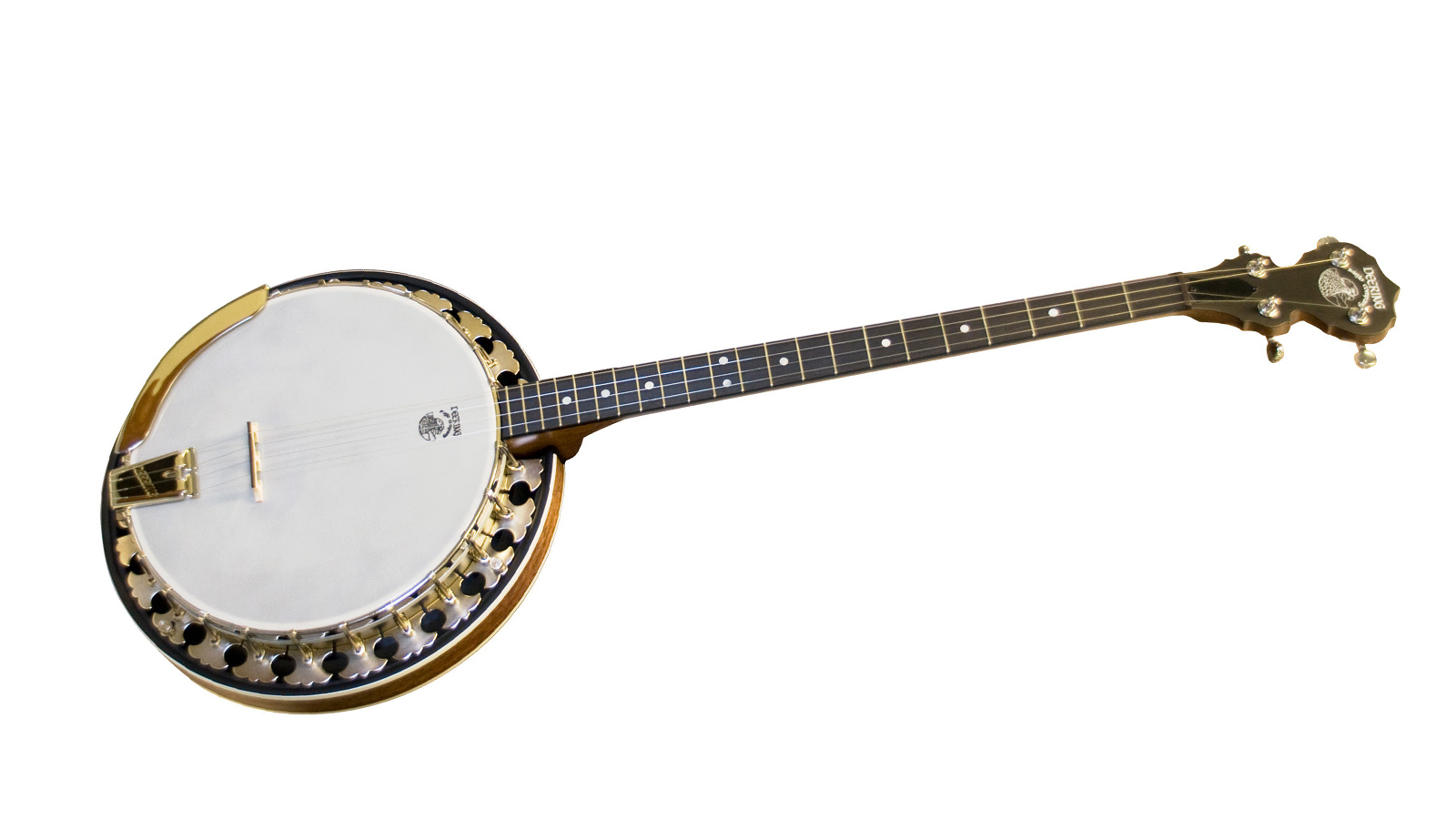
7. Deering Boston B6 6-string banjo
Our expert review:
Specifications
Reasons to buy
Reasons to avoid
You want that banjo tone but, as a guitarist, it’s just not feasible to learn a whole new instrument? No worries, you’re not alone. Deering’s B6 has been used on countless recordings, including those by the Keith Urban Band, to add some magical banjo vibe without the need for a single banjo lesson.
Essentially, it’s a banjo with a guitar neck, strings and tuning. More precisely, it’s a studio-grade instrument that’s a whole lot more than just a banjo wannabe. Increasing the string count, from five to six, introduces the opportunity to use true bass notes in your playing, and the thicker strings provide a much beefier tone. The result? That unmistakable banjo twang but with an additional tonal dimension.
As you’d expect at this price, build quality is top-notch. Deering is one of the best respected banjo makers in the US, boasting an incredibly broad range of instruments. Its prices top out at an extraordinary $63,999, and although the B6 can’t compete at this heady level, it is nonetheless a superb banjo. From its 3-ply poplar/poplar/mahogany resonator, to its wide ebony fingerboard, this is an out-and-out tone machine.
Its looks probably won’t suit the purists, but we think that bigger, heavier neck sits surprisingly well on a banjo body.
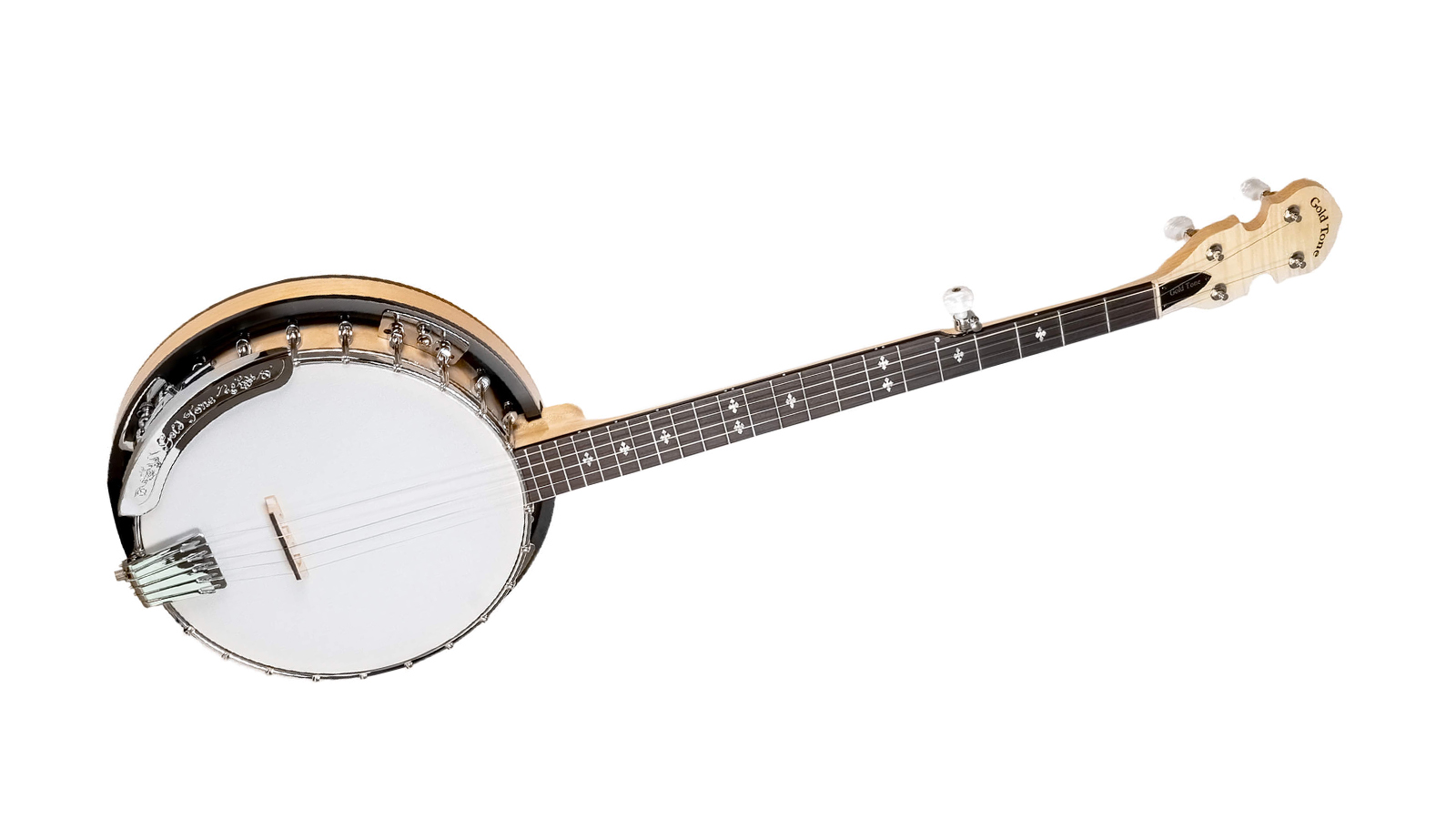
8. Gold Tone CC-100R: Cripple Creek Resonator
Our expert review:
Specifications
Reasons to buy
Reasons to avoid
Much of the time resonator banjos win hands down over their less expensive, more rudimentary cousins. They’re louder, snappier, twangier - just more banjo for your money, even if that means spending a bit more cash in the first place. However, sometimes a song calls for a softer, mellower tone. A tender touch.
With the CC-100R: Cripple Creek Resonator you’ve got the best of both worlds. You see the resonator is removable, so when a more delicate tone is called for the CC-100R can be transformed into an open back banjo in seconds. What’s more the resonator is maple, which will give you a really snappy sound when it’s installed, with plenty of top-end clarity. Remove it, and your world will immediately go soft - there couldn’t be a greater contrast.
Convertible feature aside, this is a lovely banjo built to exacting standards with decent tone woods, reliable tuners and a Remo LC coated head. It’s a versatile instrument that will suit both newbies and seasoned players.
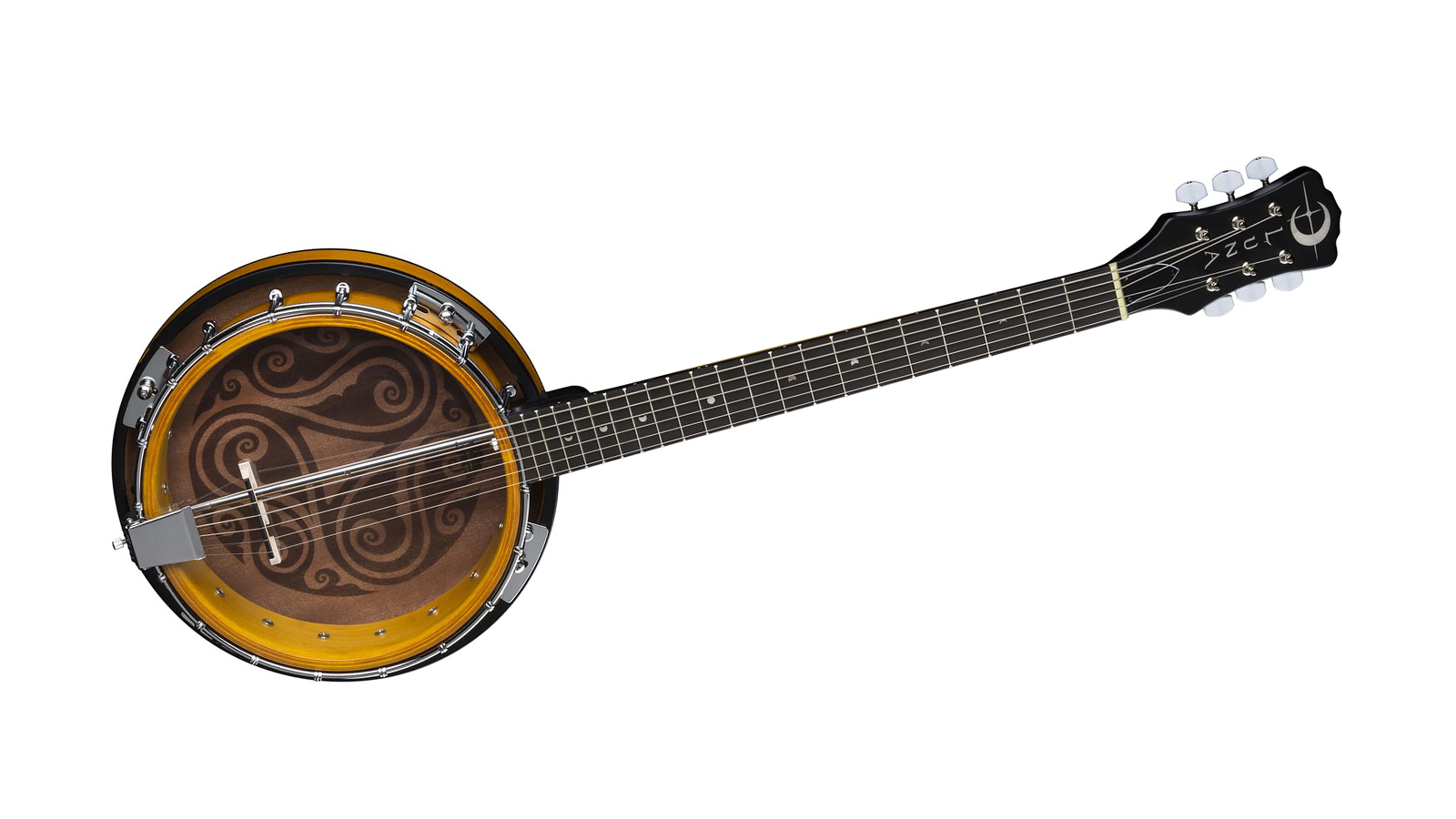
9. Luna Celtic 6-string
Our expert review:
Specifications
Reasons to buy
Reasons to avoid
Luna’s Celtic 5-string certainly looks the part, who could fail to be inspired by the beautiful, traditional pattern on the front of the resonator? Other than that detail, this Luna is no different in execution to any other 6-string guitar-necked banjo, so you’re not limited to playing folk. It’s just as suitable for bluegrass, Dixieland, or rock for that matter.
It is, of course, immediately apparent through the clear Remo head that this is a resonator. It’s certainly not lacking in volume, and the nyatoh tone wood, which has similar properties to mahogany, provides a warm yet well-defined voice with plenty of sustain.
The fingerboard is dense, straight-grained black walnut and the pegs are quality sealed units that should stop your tuning from going AWOL. Like the Deering B6 in this guide, the Luna Celtic 6-string is ideal for guitarists who want to introduce some banjo vibe to their compositions without having to learn a whole new playing technique.
Best banjos: Buying advice
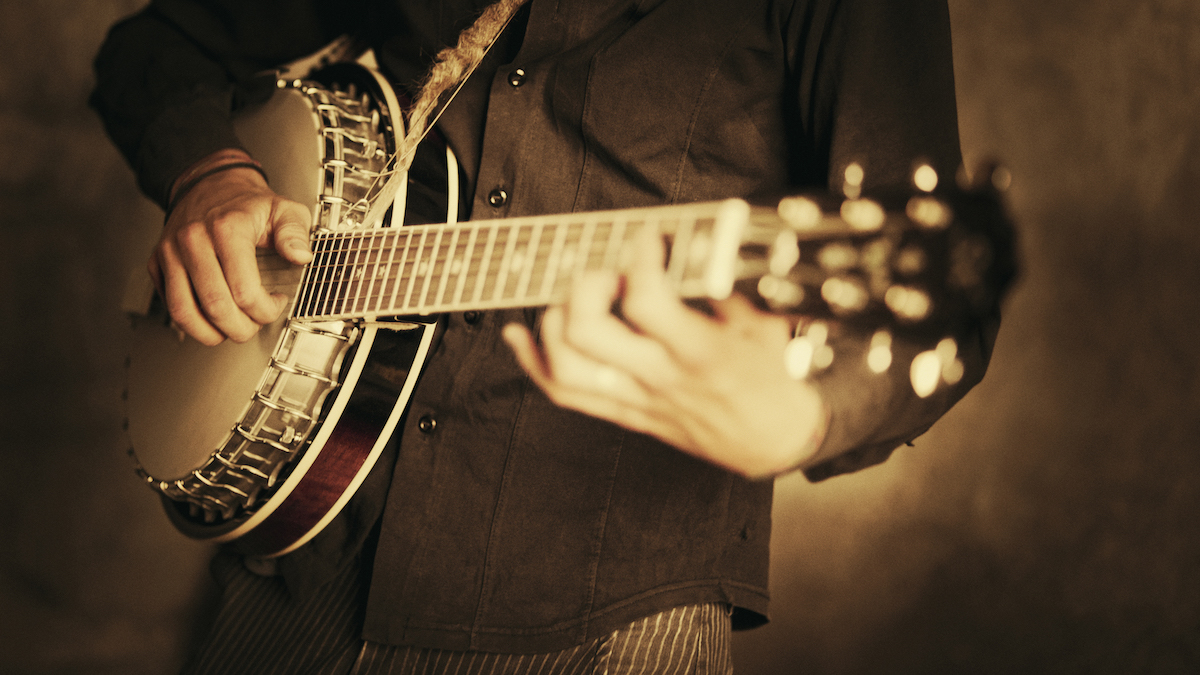
For an instrument from such humble beginnings, the evolution of the banjo has been surprisingly complex. It’s thought to have originated in West Africa, as a simple instrument with a stick neck, a skin head and a hollowed out gourd for a body.
From here it travelled and evolved via the slave plantations of the Caribbean and southern USA, the notorious blackface minstrel shows of the 1800s, the ragtime craze of the early 1900s and the Jazz Age of the ’20s and 30’s, before being associated with bluegrass, folk and country in more recent times. Along the way it picked up a fretboard and five, then four, then six strings.
Today, three styles of banjo are widely available, and each can be crafted with one of two body types that drastically alters their tone and projection.
Open back vs resonator banjos
MusicRadar's got your back
An open back banjo has, you’ve guessed it, a body with an open back. The body, which is called the pot, resembles a rudimentary percussion instrument such as a hand drum.
Because it’s held against your body as you play, the sound is dampened and lacks volume, attack and clarity. The tone will sound agreeably mellow, but it won’t be particularly snappy and, unless amplified, you may struggle to be heard over other instruments in a small band.
Open back banjos are, however, fantastic for softer, melodic tunes and their lack of definition makes them more forgiving for beginners to play because mistakes are less obvious to the listener. They are also cheaper to make than their louder, more strident relative, the resonator.
Resonator banjos have a closed pot, which resonates as the strings are plucked or struck. This gives them a more powerful, fuller tone with high levels of articulation, volume and sustain. It’s the quintessential banjo sound, alive with attack, snap and twang. They also make great instruments for soloists, but their natural habitat is in the midst of a lively band, whether that be folk, country or bluegrass.
Because of the work that’s involved in manufacture, resonators can be considerably more expensive to make and purchase than open back banjos. Their transparent tone also means that they are less forgiving for beginners.
5-string, 6-string or tenor banjo?
After a lot of development and counter development over the past few hundred years, it’s fair to say that the 5-string banjo has come out on top as the modern ‘standard’. It’s unusual, and a potential head-scratcher for guitarists, because it uses reentrant tuning where the fourth string is the lowest, then the third, then the second and then the first, but the fifth string is the highest.
The fifth string is also significantly shorter, hence the higher pitch - look for the tell-tale tuning head half-way down the fretboard - and used almost exclusively as a drone. The 5-string is played with the fingers, sometimes sporting fingerpicks, in a variety of styles including clawhammer, frailing style, Scrugg’s style and Keith style, the latter two named after notable players Earl Scruggs and Bill Keith. Usually, two fingers and the thumb are employed.
A wide variety of tunings are used, with the most common being G4 D3 G3 B3 D4. If you’re looking for a melodic, versatile instrument that can be used across many genres then the 5-string is the best choice.
You’d expect the tenor banjo to be lower in pitch than the 5-string, yet for reasons nobody is really sure of, the opposite is true. Tenor banjos have four strings, a short scale length and are often deployed in genres like ragtime and Dixieland to provide a driving rhythm based on chordal tones. However, they’re also a favourite with Celtic folk players, who use them to pick out fiddle tunes.
They’re tuned in a similar fashion to the mandolin and viola, so if you already play one of these then you’ll have a head start. Most players use a guitar-style pick between thumb and forefinger to play the tenor banjo.
Six-string banjos were first developed well over a hundred years ago, and since then have gone through transformation after transformation. A few variations now exist, including a Bluegrass version that has a bass string below the drone string, but the model you’re most likely to come across is the banjo with a guitar neck. In truth, it’s an odd concept that’s more guitar than banjo but it works. Here’s why. It has a guitar neck and guitar strings tuned just like a guitar, yet it sounds like a banjo. Which means that if you can play the guitar, then you can play the banjo. Well, almost.
In fact, the 6-string can do things that no 5-string banjo will ever be able to do, including playing proper bass lines and counterpoint melodies. It can also call on a broader range of pitches and that wider neck makes it more comfortable to play for many players. However, it’s impossible to truly mimic a 5-string banjo because it lacks the characteristic high drone. That said, most people will never notice, so if you need that banjo sound but want to retain the playability of a guitar then this one is for you!
Banjo tonewoods
The tone wood your banjo is made from can have a significant effect on its sound. Maple is bright and punchy, with plenty of sustain and dynamic range. For some, it’s just too bright, so it’s often partnered with mahogany to introduce some warmth.
Mahogany has a wonderful tone that’s woodier, softer and more mid-focused than maple. Both articulation and clarity are good, but if additional brightness is required it can, of course, be teamed up with maple.
Walnut is a stunning looking wood that’s appreciated for its balanced tone, which sits somewhere between maple and mahogany.
Related buyer’s guides
- Best ukuleles: top acoustic and electric ukes for all abilities
- Best beginner ukuleles: entry-level ukuleles for kids and adults
- Best ukulele strings for every budget
Want all the hottest music and gear news, reviews, deals, features and more, direct to your inbox? Sign up here.
When Simon's childhood classical guitar teacher boasted he 'enjoyed a challenge', the poor man had no idea how much he'd underestimated the scale of the task ahead. Despite Simon's lack of talent, the experience did spark a lifelong passion for music. His classical guitar was discarded for an electric, then a room full of electrics before Simon discovered the joys of keys. Against all odds, Simon somehow managed to blag a career as a fashion journalist, but he's now more suitably employed writing for MusicRadar and Guitar World. When not writing or playing, he can be found terrifying himself on his mountain bike.
